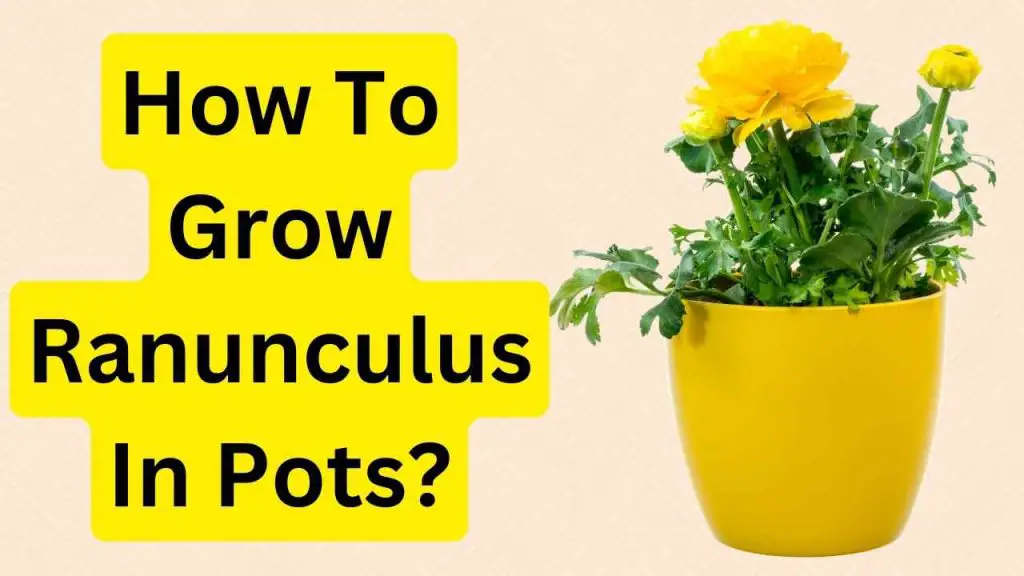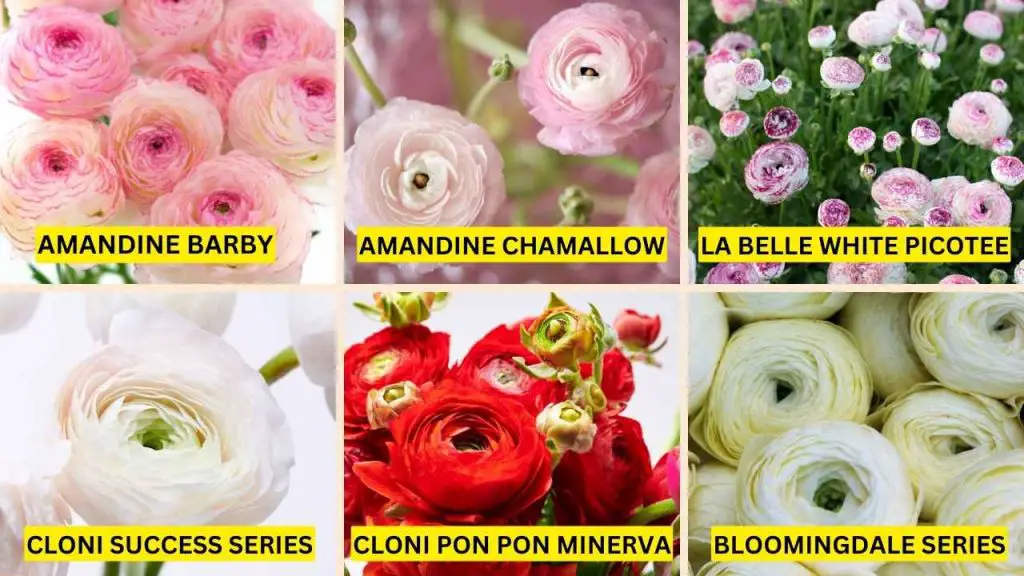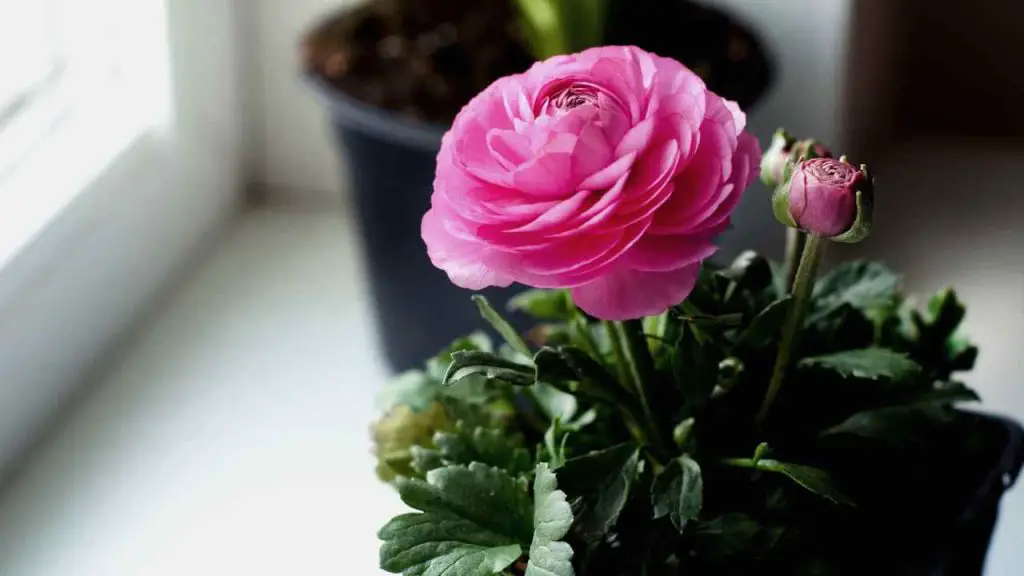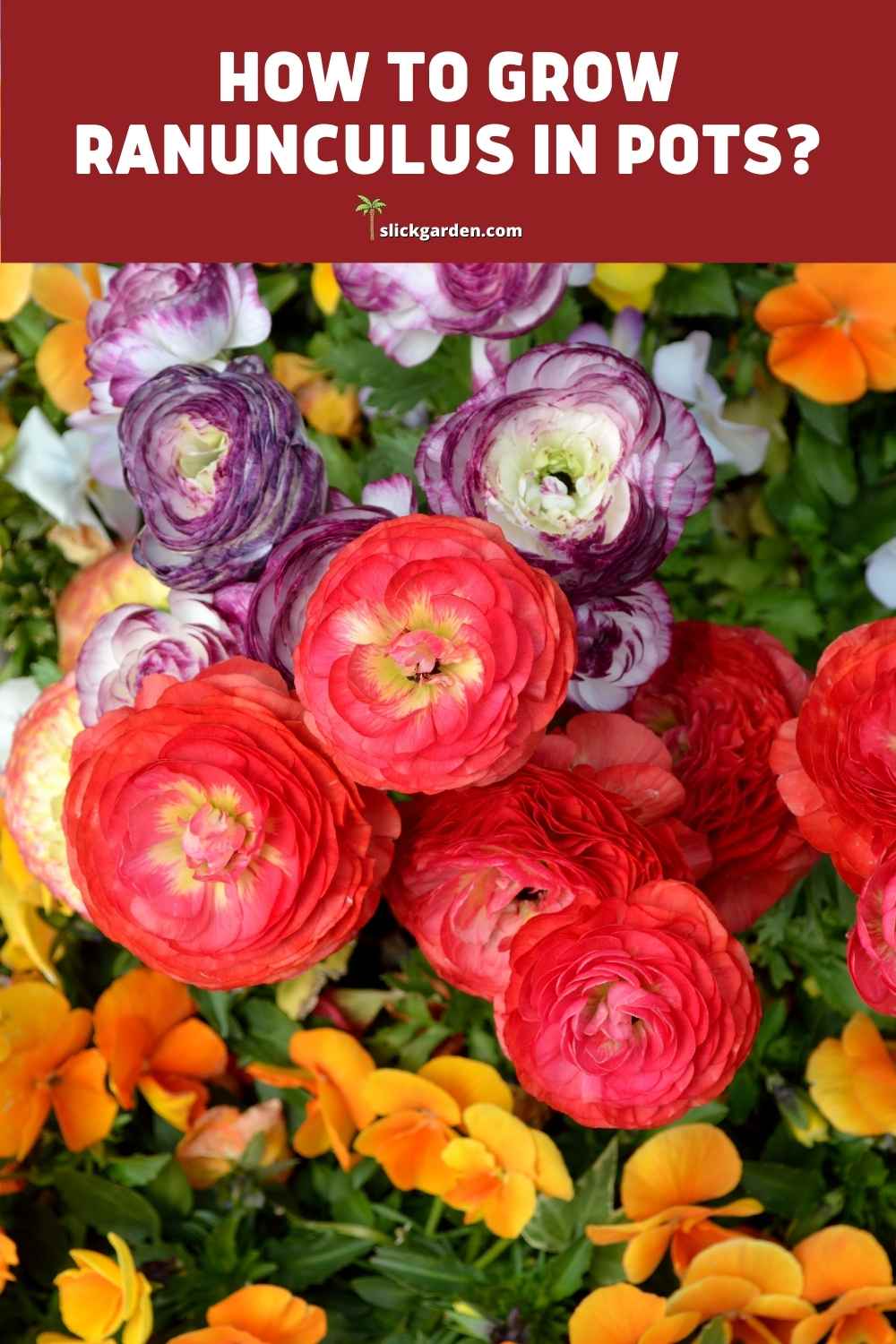The presence of colourful and attractive flowers makes you happier. If you are looking for bright flowering plants for your pots then you must select ranunculus because of its bright colours, ruffled petals, and long-lasting life. Rich soil, regular watering, and full sun exposure make ranunculus add colours.

When To Plant Ranunculus?
The best time to plant is in spring, so you will get attractive flowers in late summer. If you want blooms in the spring then you should plant ranunculus in late summer or fall.
As you are growing ranunculus in a pot so you can bring the pot inside when winter comes. Ranunculus can’t survive temperatures below 25 degrees Fahrenheit.
Even in temperatures above 70 degrees Fahrenheit then this plant will not thrive well even in pots so it can be tricky for you. It is a cold lover flower but can’t survive in the freezing period.
If you are living in a cold climate and you want to start your growing season earlier then you must pre-sprout the tubers in the late winter. Pre-sprouting is a process in which a dormant tuber wakes up in the presence of moisture and starts producing root growth.
January is the best time for pre-sprouting. When spring comes then you can easily transplant your tubers outside in your garden in your desired pot.
If you are living in a hot climate as you know ranunculus can’t tolerate high temperatures then you must plant this flower in the fall when the temperature is below 70 degrees Fahrenheit.
The ideal night temperature should be 45 to 50 degrees Fahrenheit. Put your pot in direct sunlight, especially in winter. 8 hours of sun exposure is essential for growth in the winter.
Best Varieties Of Ranunculus

Different varieties of ranunculus have different colours of blooms such as orange, salmon, pale pink, violet, crimson, white, and other shades. Following are the best varieties of ranunculus, you can choose any one for growing in pots.
AMANDINE BARBY
The colour of the blooms of this variety is pink which looks fabulous. If pink is your favourite colour then you can choose this variety. The stems of this variety are very strong and this plant grows very vigorously. The maximum height of Amandine Barbie is 10 to 15 inches.
AMANDINE CHAMALLOW
This variety also grows vigorously and has strong stems. The colour of the blooms is blush, pale pink, and cream. These flowers can be used for decorating wedding decorations because of their amazing look.
The maximum height of plants of this variety is about 10 to 15 inches. The stems grow up to feet tall with large blooms.
LA BELLE WHITE PICOTEE
Another amazing variety of ranunculus with unique blooms. The flowers have two colours with a white base and pinkish-purple tips. The presence of these attractive flowers. Each tuber of this variety of ranunculus plants produces 9 to 15 stems.
CLONI SUCCESS SERIES
You can choose this variety because of its large blooms. The size of the blooms is about 4 ½ to 5 inches. The blooms are white-tinged with pale pink.
CLONI PON PON MINERVA
The petals of blooms of this variety of textures like carnations and fringes. The unique texture with pink colour makes the flowers stunning. This variety also grows vigorously and produces stall stems with large flowers.
BLOOMINGDALE SERIES
This variety can grow up to 8 to 10 inches in height. The size of the leaves is very small. The ideal temperature for growing Bloomingdale varieties is 23 degrees Fahrenheit.
The flowers come in different colours such as white, purple, yellow, pink, rose, red, and bicolour shades. You can easily choose this variety for growing in the pot because of its compact nature.
How To Grow Ranunculus In Pots?

This perennial flower can easily be grown from tubers. Tubers are fleshy underground structures with buds or eyes. Tubers produce shoots from the buds or eyes that eventually turn into leaves and stems.
You can also grow ranunculus flowers with seeds. We will discuss with you both methods for growing ranunculus in pots.
FROM SEEDS
If you decide to grow ranunculus from seed then you must start them early because your plant will be ready to produce flowers after 4 to 6 months.
It is better to sow the seeds 16 weeks before the last frost date. You can take all the information about the dates of frost in your area from any local nursery or any gardening store.
FROM TUBERS
How To Pre-Sprout Ranunculus?
- Soak the tubers in the water for 4 hours to complete the process of pre-sprouting.
- When the soaking period is complete then take a tray and fill it with potting mix.
- Place the tubers on the potting mix but make sure their octopus-like legs should be pointing down.
- For maintaining the humidity level in the soil, you must take another tray and flip it over the top.
- Regularly inspect the soil of the tray and never let it dry out and prevent it from mould and rot.
- After 1 to 2 weeks, you will see that tiny roots are emerging from the tubers. After 3 to 4 weeks you can transplant the ranunculus outside to the desired pot. But you must cover the ranunculus for a month before the last date if the temperature of your climate is below the freezing point.
- If you have a greenhouse then you can put your pots there and wait till the outside environment is favourable.
Setting Up Pots
Make sure you are using 10 inches of pot for growing 2 to 3 small tubers. But you can grow only one jumbo-size tuber in this pot. You can use different sizes of pots but make sure there must be 4 inches of space between each tuber.
If you are using jumbo tubers then they need 12 inches of space for perfect growth. Fill your pot with high-quality mix and set each tuber to inches deep in the soil. After planting, tubers need thorough water.
How To Care For Ranunculus?
There are many factors that play an important role in the growth of ranunculus in pots. The use of fertile and rich soil at the right time of planting, regular watering, and a favourable climate are all very important for the growth of these beautiful flowers.
LOCATION
Generally, ranunculus needs 6 to 8 hours of sunlight daily. If you want colourful flowers then you must choose a sunny location for your pot. But if you are living in a hot climate then you can also put your pot in a partially shaded area.
SOIL
When you grow plants in a pot then you can maintain the fertility of the soil. Never fill your pot with garden soil. Make sure you are using a high-quality potting mix that contains all the essential nutrients that are needed by ranunculus plants.
WATER
Keep the soil moist with regular watering but avoid over-watering because excessive moisture can become the reason for root rot and many fungal diseases.
The young plants that are not established need more moisture but when your plant is established then you can reduce the frequency of water. Fully grown ranunculus plants need water 2-3 times a week.
In winter, when plants are in a dormant position then you should stop watering otherwise the leaves of the plant start turning yellow.
CLIMATE AND TEMPERATURE
Favourable climate and temperature play a very important role in the growth of your plants. The ideal temperature for growing ranunculus plants is between 50 to 60 degrees Fahrenheit.
Your temperature should not be below 25 degrees Fahrenheit otherwise the plant doesn’t survive. If the temperature is above 80 degrees Fahrenheit then ranunculus can be the victim of powdery mildew.
The number of blooms will reduce and your plant will be destroyed by different diseases.
FERTILIZER
As you are growing ranunculus plants in the pots then there is no need of adding fertilizer because you are using a high-quality potting mix that contains compost and all essential nutrients that are needed by your favourite plants.
Slow-release fertilizer is ideal for using ranunculus plants. The other option is using a combination of fish emulsion and kelp. Now the question arises of how many times you can fertilize your ranunculus flowering plants.
If you want to improve the performance of your favourite plants then you can apply fertilizer a few times during the growing season. But you should keep in mind the fertilizing time starts when your plant is completely established.
Young plants have new roots and leaves so they can be burned by using fertilizer.
MAINTENANCE
The good thing about the ranunculus plant is that when it is established then it needs little maintenance. There is no need for pinching or pruning. If you see faded flowers then you can cut them at the base of the flower stem.
Keep Reading
- Best Flowers To Grow For Bouquets
- 20 Shade-Loving Flowering Plants
- How To Make Flower Bed Out Of Deck?

When And How Harvest Ranunculus Flowers?
Within 2 to 3 months, after planting ranunculus in the pot, start producing flowers. If you select the method of growing your ranunculus plants from seeds then you will see the blooms after 4 to 6 months. Each tuber has 3 to 5 stems. In the case of some varieties, each tuber can produce 9 stems.
If we talk about harvesting the cut flowers. It is better to cut the stems when you see the buds are in the marshmallow stage. It means the buds are open and showing colour but the petals are not unfolded.
When you touch the buds, they feel very soft and squishy. Now you can use these flowers for decorating your home. If you harvest the flower at the right time then they can last in the vase for about a to 10 days.
Pests And Diseases
Pests and diseases are very harmful to the healthier growth of your plants. You must be careful and regular examination of your favourite plants can protect them from these problems. The followings are the pests and diseases that can affect ranunculus plants.
APHIDS
Aphids produce secretions called honeydew which cause black spots on the leaves. If you want to get rid of these tiny monsters then you can use a forceful stream of water sprayed on the ranunculus plant. It will help to kill small aphids. You can also buy pesticides from the market that can help to reduce the population of aphids.
CUTWORMS
Cutworms can damage your plants by eating them. You can pick them up to protect your plants. Cutworms are active at night so it is difficult to find them. It is better to take the soil you will find in the soil curled up in a c shape.
POWDERY MILDEW
In a hot and humid environment, your plant can be the victim of power mildew. This is a common problem when you see white growth on the leaves. Gradually, the leaves turn yellow, and finally your plant. To prevent your plants, make sure they get fresh air.
BOTRYTIS
This disease causes moulding and rotting of the tubers. When you see irregular shapes of petals then it means your plant is affected by botrytis.
To avoid this problem make sure there is perfect spacing between your plants and that they get fresh air circulation. If you find any infected tuber then immediately discard it.
